Today we have our Gigabyte X299 AORUS Master motherboard review. This LGA2066 motherboard is designed to provide all of the features one needs for a high-end workstation of this class. This includes USB 3.1 Gen 2 ports, Intel Optane Memory support, 4-Way SLI, a slew of PCIe and storage expansion options and Intel Core X Series Processors for high single core speed. Additionally, the platform supports comprehensive monitoring to round out notable features that help keep your system running cool and efficiently. In our review, we are going to show you the key features of the Gigabyte X299 AORUS Master.
Gigabyte X299 AORUS Master Motherboard Overview
As with many enthusiast motherboards, the box art is colorful; the Gigabyte X299 AORUS Master motherboard is no different. The AORUS Eagle graphic is displayed center with bright orange colors on a black/gray stylized background.
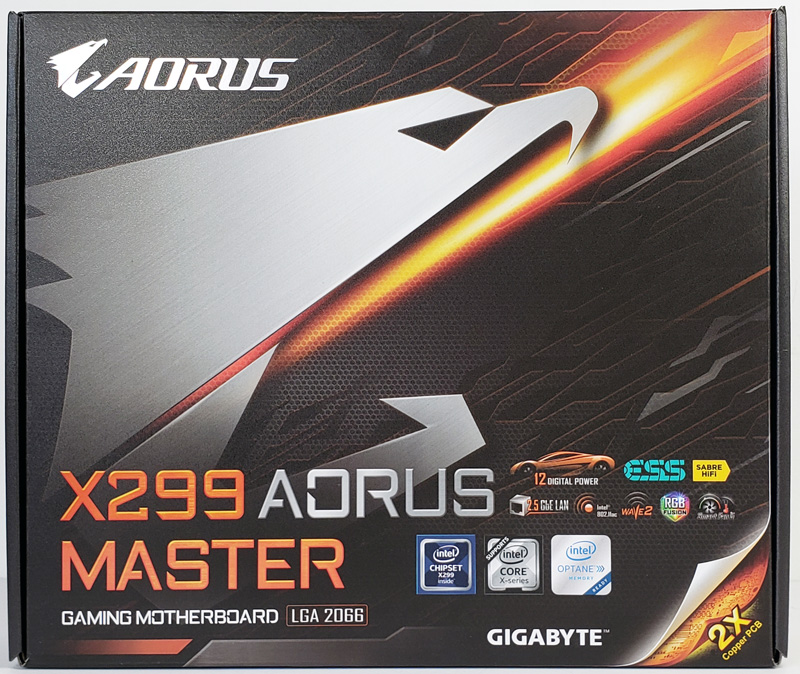
Many of the motherboard features and specifications are listed on the back of the retail package.
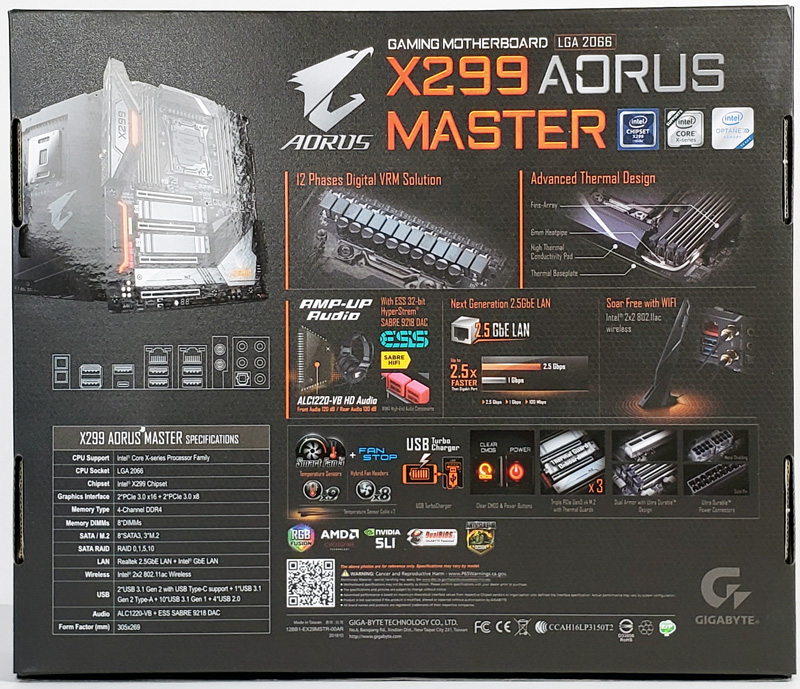
After removing the motherboard from the retail box, we get our first look at the Gigabyte X299 AORUS Master motherboard. Here is Gigabyte’s image showing areas that have LED’s which can be controlled with software.
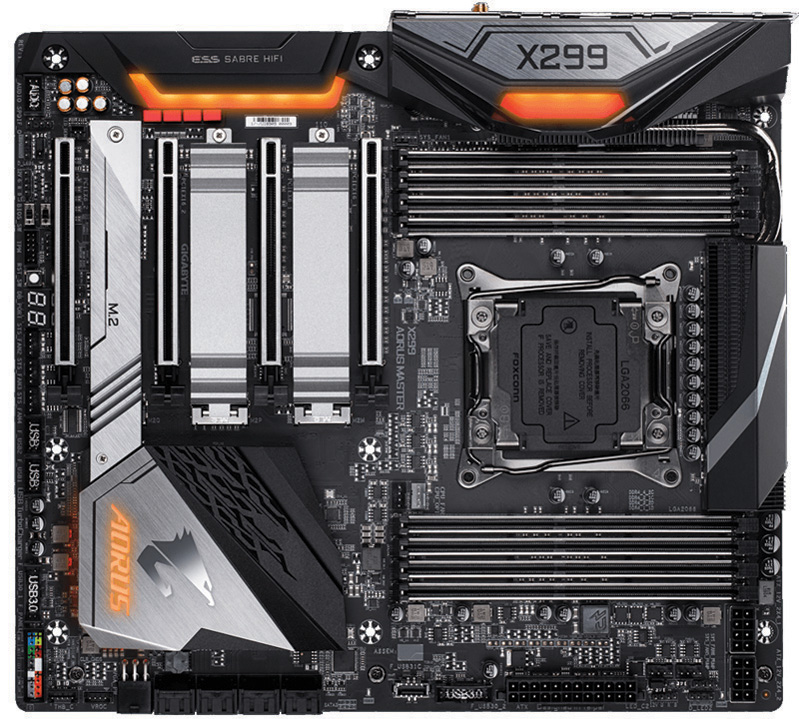
It is also clear to see just about every PCIe slot, Memory slots, and even power connectors have built-in Ultra Durable Armor for added protection and strength. At the rear I/O area, the X299 AORUS Master includes an integrated built-in I/O shield and housing that has an active fan inside for faster MOSFET heat dissipation. The fan automatically adjusts fan speed depending on VRM temps. Heat pipes from the power circuits direct heat flow.
Four PCIe slots make up the expansion slot options which make sense:
- 2x PCI Express x16 slots, running at x16 (PCIEX16_1, PCIEX16_2)
- 2x PCI Express x16 slots, running at x8 (PCIEX8_1, PCIEX8_2)
Here we see how four graphics cards installed will use the PCIe slots, these provide support for:
- NVIDIA Quad-GPU SLI and 4-Way/3-Way/2-Way NVIDIA SLI technologies.
- AMD Quad-GPU CrossFire and 4-Way/3-Way/2-Way AMD CrossFire technologies.
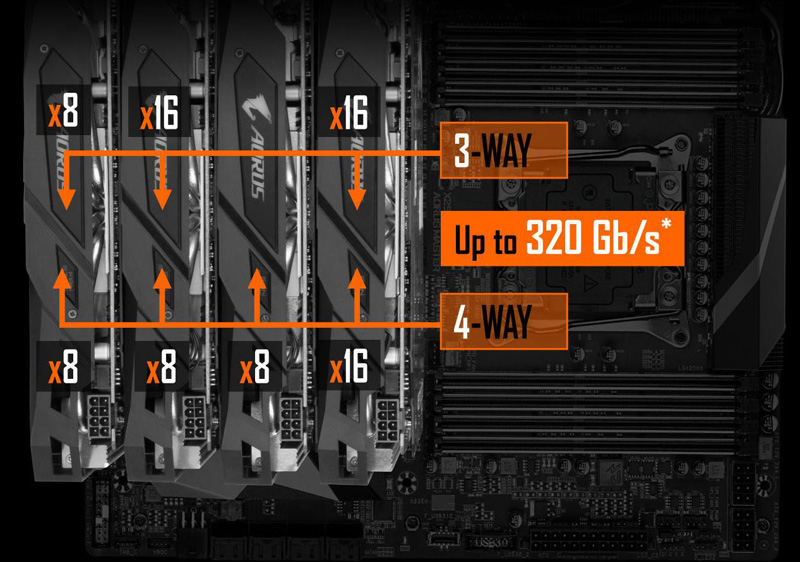
Between the PCIe slots, we find three M.2 PCIe Gen3 x4 (Type 22110 or 110mm) slots. AORUS M.2 Thermal Guard Covers screw into place to cool the M.2 drives to help with thermal throttling when the drives get hot. One M.2 connector comes off of the CPU while the other two come off the X299 chipset. This provides plenty of flexibility for capacity, redundancy, and performance.
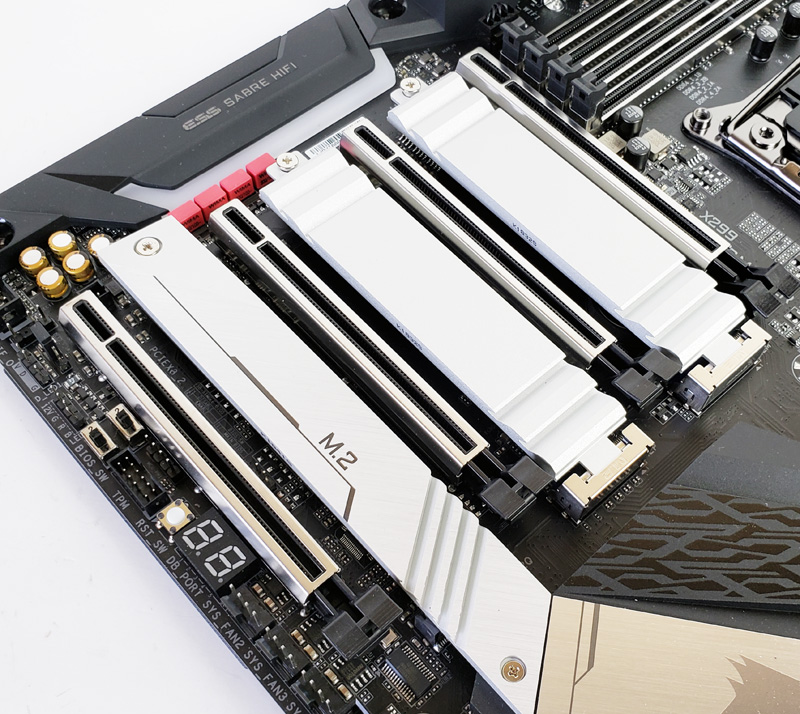
Storage ports at the front edge of the motherboard include:
- 8x SATA 6Gb/s Ports
- VGA PW (PCIe Power Connector)
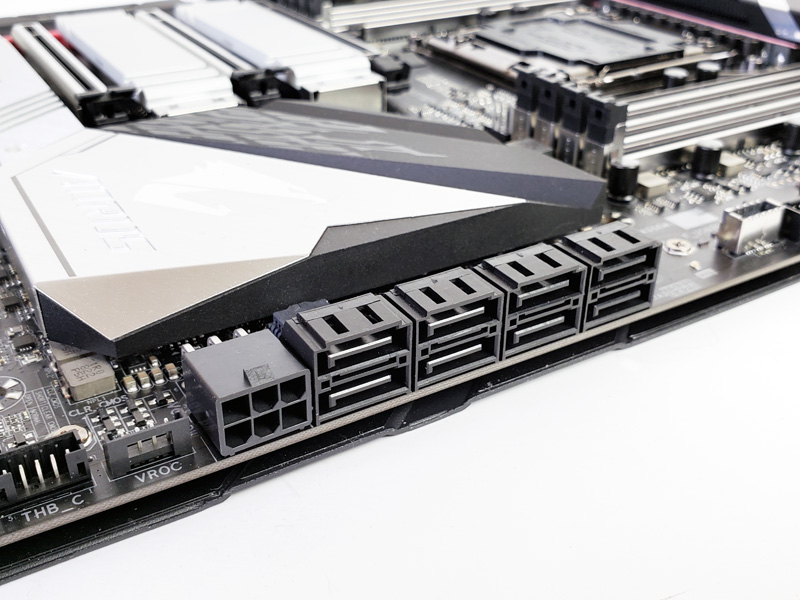
The left edge of the motherboard has front panel USB 3.0 ports, front panel header, TPM, four fan headers and a host of additional headers. An LED Debug is also included. The Gigabyte X299 AORUS Master motherboard also includes dual-BIOS support, and we find switches on the left edge to select which one to use.
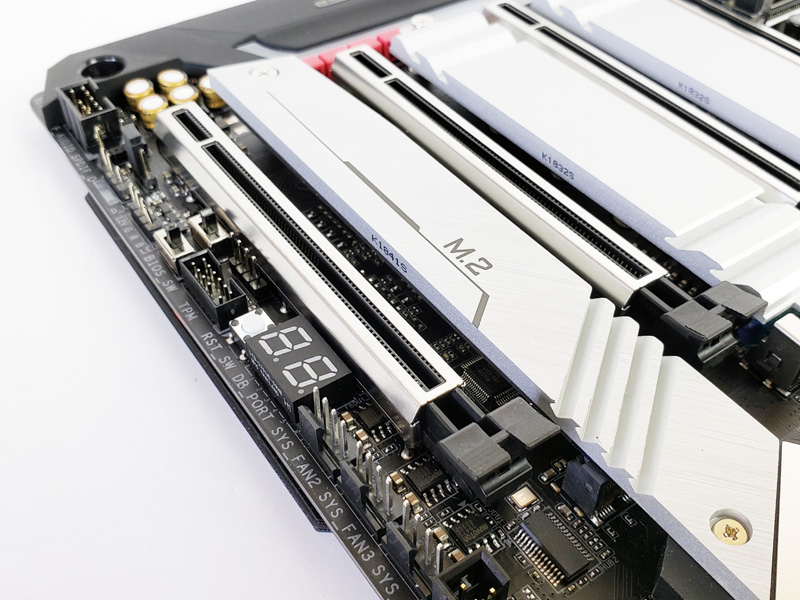
The Gigabyte X299 AORUS Master uses the standard 24-Pin power connector and two 8-Pin CPU power connectors. This type of power configuration previously was the domain of dual CPU setups, but now we are seeing it on higher-end single CPU motherboards.
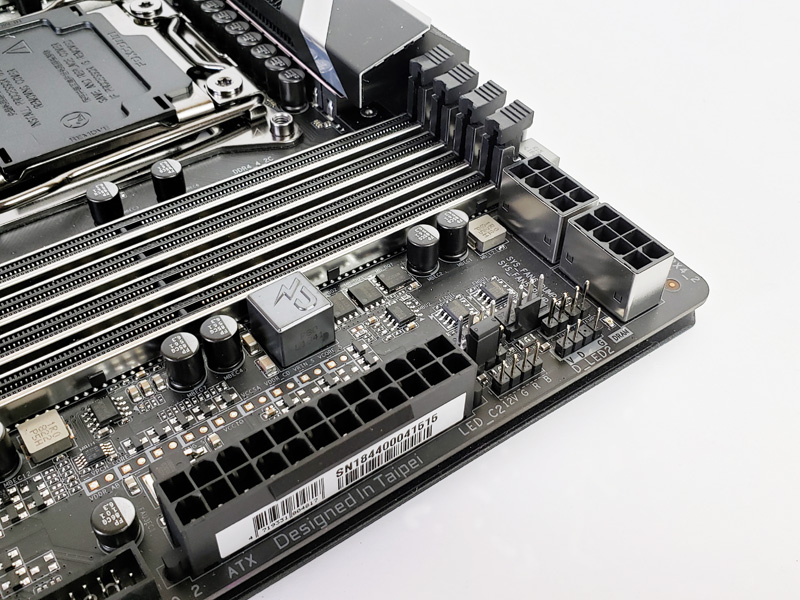
Let us turn the motherboard around and take a look at the rear I/O.
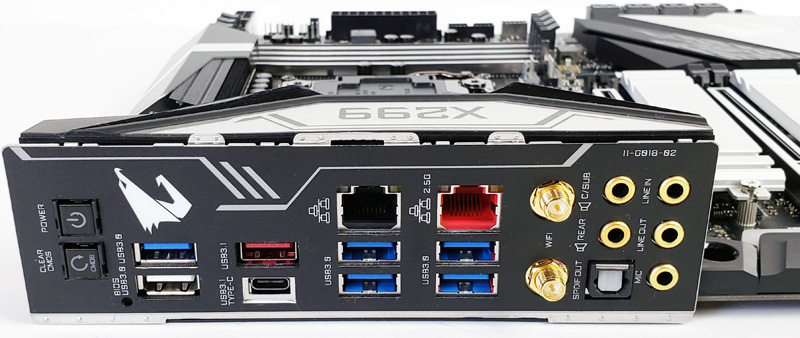
Looking at the rear I/O ports, we find:
- Power Button
- Clear CMOS Button
- USB 3.1 Gen 1 Port
- USB 3.1 Gen 1 Port (White) Q-Flash Plus
- USB 3.1 Gen 2 Type-A Port (Red)
- USB Type-C Port
- RJ-45 LAN Port (LAN2) 1 Gbps
- 2x USB 3.1 Gen 1 Ports
- RJ-45 LAN Port (LAN1 Red) up to 2.5 Gbps
- 2x USB 3.1 Gen 1 Ports
- SMA Antenna Connectors
- 7.1 Channel Audio Output Ports
Years ago the deltas between server and workstation motherboards often blurred. These days, workstation motherboards have impressive amounts of rear I/O while server motherboards have stayed the same and in some cases decreased their rear I/O footprint.
One change we are seeing in this generation is support for 2.5GbE. Here, there is a single Intel 1GbE port as well as a (red) companion Realtek 2.5GbE port. For those who have multi-gigabit networks, this is a differentiating feature over lower-end boards.
Wireless connectivity includes not just 802.11 a/b/g/n/ac for Wi-Fi, but also Bluetooth up to Bluetooth 4.2. As much as we focus on wired connectivity, many users need wireless connectivity and Gigabyte provides it here.
Flipping the motherboard over we get a view of the impressive back plate that covers and protects most of the motherboard, it also adds a great deal of strength to the board and helps keep it from flexing. It is not wholly uncommon to hear of users who get shorts using workstation motherboards improperly in cases. This backplate substantially reduces that risk and helps systems builders increase quality.
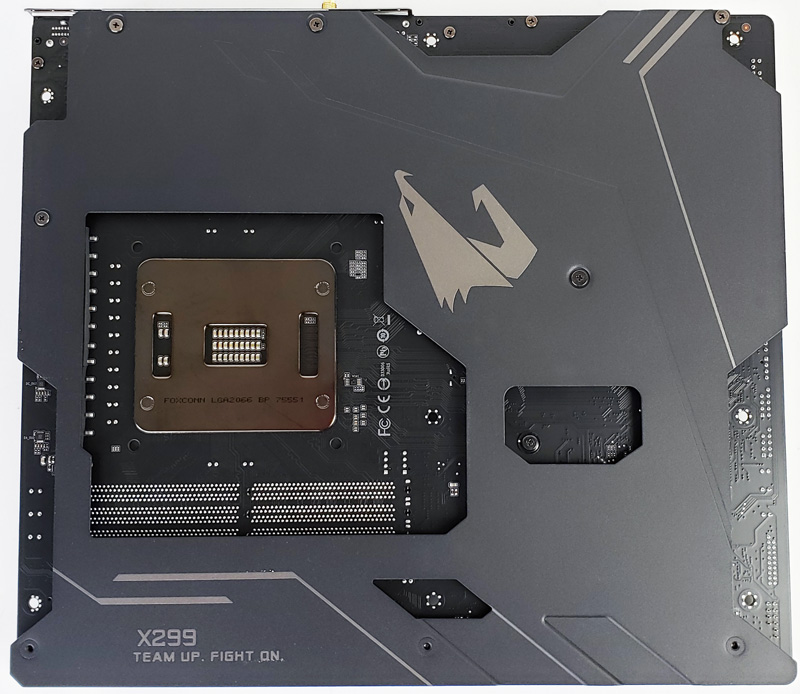
Here is the Gigabyte AORUS X299 Master diagram for fan headers and sensors on the motherboard. These allow for complete control and monitoring system status of your completed build.
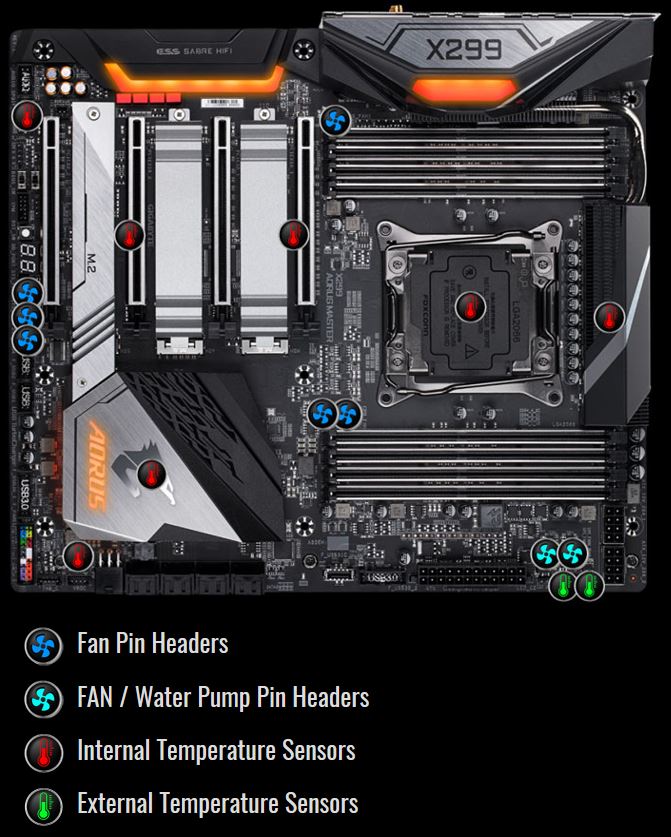
Here we see the full accessory kit of the X299 AORUS Master.
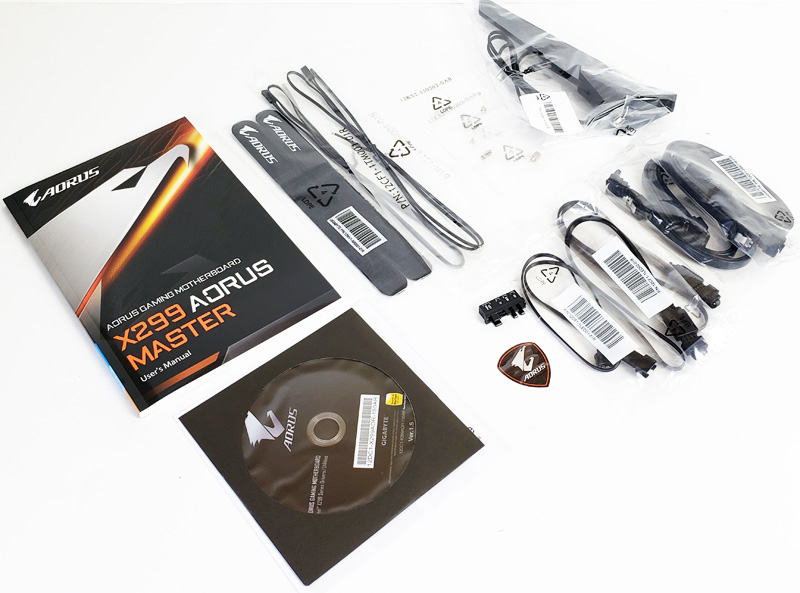
Inside the box, there are a number of accessories. Here we have a fairly complete kit that will help make building a system around the motherboard easier:
- Motherboard driver disk
- User’s Manual
- Quick Installation Guide
- Four SATA cables
- One Wi-Fi antenna
- One G Connector
- One addressable LED strip adapter cable
- Two RGB LED strip extension cables
- Two Velcro Cable Ties
- Two thermistor cables
- M.2 screw(s)/M.2 standoff(s)
Before we get on with our testing, let us take a look at the Gigabyte AORUS X299 Master motherboard BIOS and software.

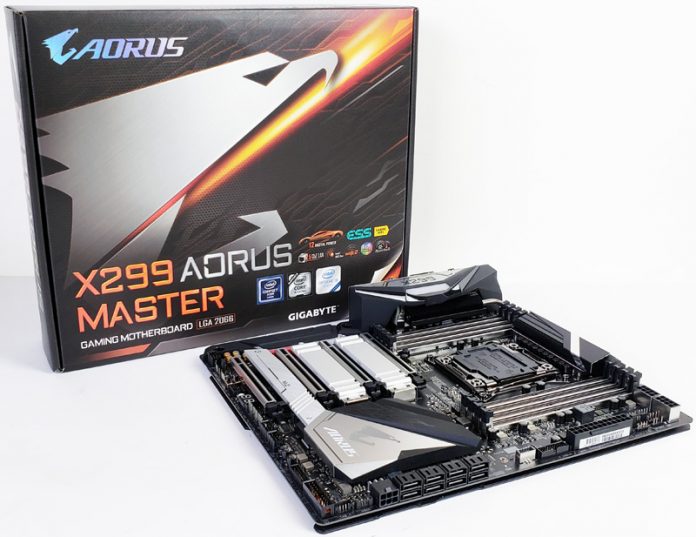
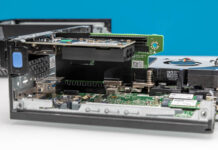


X299 vs. X570 won’t be a battle, X570 already won before it is offically launched.
One of the worst reviews I saw on this excellent site. Mostly copy & pasted marketing material.
You don’t even specify the test setup used in the benchmarking?
If one is to believe the screenshots, you have put 16 (or 32?) GB of 2133 MHz DDR4 in the machine. That must be a first on this planet…
The big selling point of the INTEL platforms these days is the better ability to handle high speed memory, especially when fully populated. AMD can’t really do that on X399 and you will have to downclock below 3000 MHz and instead fiddle with timings to get some performance back.
Since you are talking about this board in a workstation context, you should have it fully populated with 8 sticks of 8GB or rather 16GB. If you want to improve the article and add something not found in 99% of HEDT reviews, then put 128 GB of high speed memory int the board and show what it can do. 3200 MHz cas 14 is realistic.
I agree with H H. This is a bunch of marketing fluff along with a few benchmarks thrown in. STH really should post their metrics for 4 review categories. If I read the review correctly, this board is priced the same as other boards in this category. What did it get a 9.3? I think the aestetics category also needs to go bye-bye. If we are talking about workstation hardware, it doesn’t matter if this thing looks like it came out of a 1995 Packard Bell. William Harmon hasn’t given out a single review rating that was under 4.5 stars. Am I to believe everything he has reviewed is a rock star product?!
The given review of the Gigabyte x299 aorus motherboard is very well described and by going through the post, we can have much information regarding this.